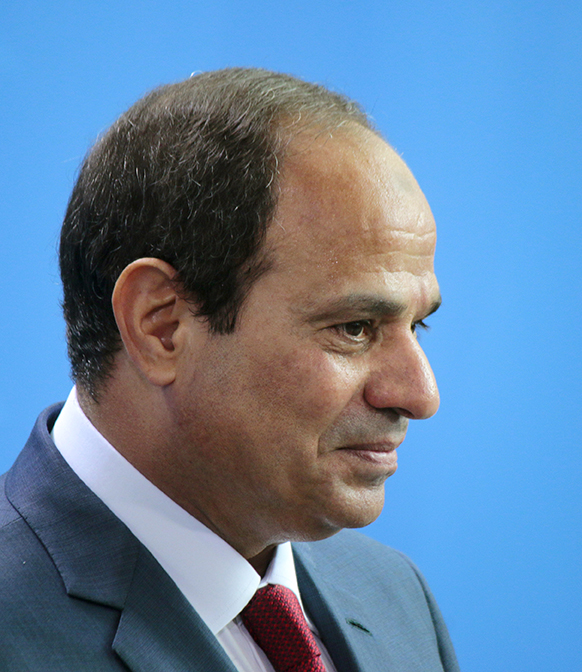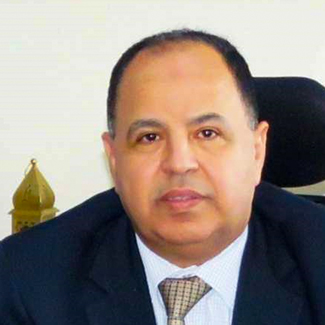Three years ago, Egypt was on the edge of economic collapse. Now it’s on the rebound and attracting big foreign investors like Siemens and Mercedes-Benz
In 2016, Egypt’s economy was flirting with the brink, as inflation soared, growth crashed and unemployment ballooned. Now GDP growth is a rosy 5.3%, the highest it has been since 2010, turning Egypt into one of the fastest-growing economies in the region.
With the introduction of macroeconomic stability, investors have returned, including a host of German companies. In 2018, Siemens opened the world’s largest combined-cycle power plants, and Mercedes-Benz announced earlier this year that it would begin manufacturing vehicles, both electric and conventional, in Egypt.
These investments provide tangible proof that bold and politically sensitive reforms have worked. In July, Egypt completed a three-year austerity program led by the IMF under a $12 billion loan deal, which has been largely attributed with setting the economy back on a stable course. Growth is now projected to reach 5.8% in 2020, according to the African Development Bank, and runaway inflation has been tamed.

President Abdel Fattah El-Sisi has overseen a period of strengthening German-Egyptian relations since his re-election in 2018. After the confirmation of his current term, Germany pledged 129 million euros in funding to Egypt for new sustainable development measures. Then at the top of this year, President Sisi met with Federal Chancellor Angela Merkel twice – at the Munich Security Conference and the first European Union-League of Arab States Summit – paving way for increased cooperation across numerous fronts.
“In 2016, inflation hit above 30%. Now it sits at around 12.5%, and we are targeting to get it around 10% next year,” says Minister of Finance Dr. Mohamed Maait. Foreign currency reserves, which had fallen below $15 billion, are now close to $45 billion. Unemployment is down to 9% from 13.3% three years ago. And an overall deficit that stood at 17% in 2015 is now expected to drop to 8.3%.
However, while renewed growth and stability can be traced to the reforms, its prescription of raising VAT and cutting energy subsidies has exacerbated poverty in a country of 100 million that already grapples with extensive inequality. The percentage of Egyptians living below the poverty line ($1.45/day) rose to 32.5% in 2018, up from 27.8% in 2015, official figures confirm.
Yet, Egyptian officials point out that, compared to three years ago, the quality of life has nonetheless improved. “There is still an imbalance between income and the cost of goods,” concedes Dr. Maait, “but many people who were living in slums or inadequate housing before now have far more social housing than ever before,” he says.

Current GDP growth is at the highest level since 2010, and is projected to reach 5.8% in 2020 (AfDB)
Egypt’s population as of 2019, based on UN estimates
IMF reform program completed in 2019, which included raising VAT and cutting subsidies
Deficit-to-GDP ratio. Down from about 17% four years ago
Inflation rate, the lowest level in four years. Down from above 30% in 2016.
Debt-to-GDP ratio. Down from 110% in 2017
Foreign currency reserves. Up from $15 billion four years ago
Backed by the IMF, Egypt’s Central Bank has promoted low-cost housing and power financing, the latter in an effort to lighten the blow of slashed subsidies. Now, compared with 2016, lenders like Egypt’s Industrial Development Bank (IDB) have taken a “different direction” in retail banking. “We extended around 1 billion EGP (€54 million) to real estate financing for people with limited income as part of the Central Bank of Egypt’s initiative,” says Maged Fahmy Attieh, chairman and managing director of IDB.
IDB is also financing natural gas for low-income residential units through partnerships with energy companies. “Overall, we made a portfolio with around EGP1.5 billion (€81 million) worth of retail banking for these development purposes,” says Attieh.
That Egyptians even have power is an accomplishment in its own right. “Electricity used to be cut up to 12 hours per day,” says Dr. Maait. “Now we have an electricity surplus.”
Here, German investment has played a paramount role. Through Siemens’ mega power project, electricity has been brought to 40 million Egyptians (read more on page 7), providing the add-on effect of providing the promise of stable power for further foreign investment.
“Having an abundance of electricity will attract industries and investors to Egypt,” attests Emad Ghaly, CEO of Siemens Egypt. “If you look around in Africa, you can see that other nations with populations even larger than Egypt don’t have an installed base of power generation as Egypt now does.”
Following Siemens’ success, observers widely agree that getting more of the private sector involved will be key to cutting debt and job creation. Siemens’ megaproject provided 24,000 jobs, alongside invaluable skills training.
Great opportunities lie in constructing more fundamental infrastructure, says Siemens. “The next big focus is on transportation,” explains Ghaly. “If you look at the number of projects announced by the government – from high-speed lines and monorails to metro lines or additional railway lines – there will be a lot of development going forward.”